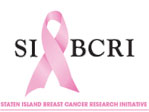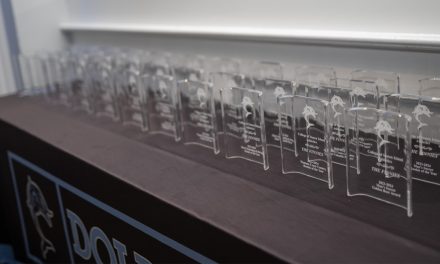The incidence of breast cancer is inordinately high on Staten Island, as the borough has one of the highest death rates from the disease in the state and the highest death rate in New York City.
In response, researchers at the Staten Island Breast Cancer Research Initiative (SIBCRI) at the College of Staten Island (CSI) are working diligently to discover what is causing this epidemic and to educate the community about this disease.
Recently, the SIBCRI received $80,000 in crucial funding through a bipartisan effort of members of the New York City Council, $50,000 from State Senator Andrew Lanza, and Staten Island Borough President James Molinaro has given money toward essential research equipment.
Donna Gerstle, Professor of Environmental Science, and a co-principal CSI researcher in the SIBCRI (along with Alfred Levine, Interim Dean of Research and Graduate Programs; Jimmie Fata, Assistant Professor of Biology; and Michael Kress, Vice President for Technology Systems), says that the SIBCRI is tackling breast cancer on three fronts: “The first is an epidemiological study, which is a case-control study that looks at individuals on Staten Island from 1980 to 2006 and it will compare their lifestyles and risk factors to a control set of individuals. The second is to evaluate how environmental factors actually influence breast tissue development and we will be exposing mammary tissue to a set of known environmental carcinogens that exist in the Staten Island air. Finally, we are going to be doing for the community a prevention educational program that will work with health care providers, community-based organizations, elected officials, and schools.”
At present, Gerstle reports that she and Dr. Levine are examining obituary information from the Staten Island Advance. “We are in the process of going out and getting obituary information because we are able to get life histories with the Staten Island Advance through the obituaries and they’re reliable and we’ve used them as the way we get our information on individuals for years now.” So far, Gerstle and Levine have collected information from 1980 to 1990.
In addition, Dr. Fata has begun to examine breast cancer tissue samples in his lab, and for his part, Gerstle notes that “Dr. Kress is taking care of all of our computer needs, and he has developed a database to enter all the data in.”
CSI students are also a part of the SIBCRI, joining the large group of about 20 scientists, attorneys, sociologists, individuals involved in education, people from health departments, and three physicians who are all part of the effort.
Gerstle says that all of her graduate students have participated in important aspects of the research, including an examination of the number of children that a woman has had and risk of breast cancer (which appears to have an inverse correlation), development of a breast cancer questionnaire for the study, and investigations into where victims lived during puberty (as this is a crucial time for breast development).
Karen Saur, a CSI graduate student in Environmental Science researching residence at time of puberty, notes, “It is rather exciting and interesting to be part of this project. Since I am a woman living in Queens and going to school on Staten Island these risks I am looking into can potentially apply to me or other women I know, including family. When it comes to cancer, the more you know about risk factors, the better chance you have of reducing your risk.”
Beyond research, the SIBCRI has also begun a concerted effort to educate the community about breast cancer. Gerstle states that we’re going to be developing what we call ‘action kits’. These action kits will combine the best of the breast cancer materials that are out there… [and then] we’re going to have individuals going to elected officials and going into schools and community-based organizations and saying, ‘this is what you can do’.”
All of these efforts, according to Gerstle, would not be possible without the help of the area’s elected officials. “That Speaker [Christine] Quinn recognized from just a few minutes of speaking to me that this was important work is beyond words. It just shows what a maverick she really is and what a wonderful person—and Councilman [James] Oddo urged her on. The work could not be done without them; we would not be able to give the women of Staten Island and the entire community an answer as to what is going on.”
Although Gerstle points to three major projects that the SIBCRI is taking on, it is also heading up a fundraising drive to knit and sell scarves. In fact, SIBCRI volunteers sold about 125 scarves at CSI’s First Annual Fall Festival last October. Gerstle explains, “Everyone who’s knitted for us knows someone who has come in contact with this horrible disease or has at least had a scare, and every scarf tells a story in its stitches.”
How does Gerstle feel to be a part of the SIBCRI? “It’s amazing. It’s been my life’s work. I’m a native Staten Islander. I was born and grew up here. I raised my daughter here. If there’s a problem, I think it’s incumbent upon all of us to find out what it is. My feeling about cancer research is that we do have to take certain methods of prevention, but our goal is to find a cure—find out what is going on, and hopefully prevent it from ever happening again…Maybe if we can find an answer on Staten Island, then maybe that can give us some insight into all breast cancer.”
For more information on the Staten Island Breast Cancer Research Initiative, or to volunteer as a scarf knitter, call Dr. Gerstle at 718.982.3922.
















